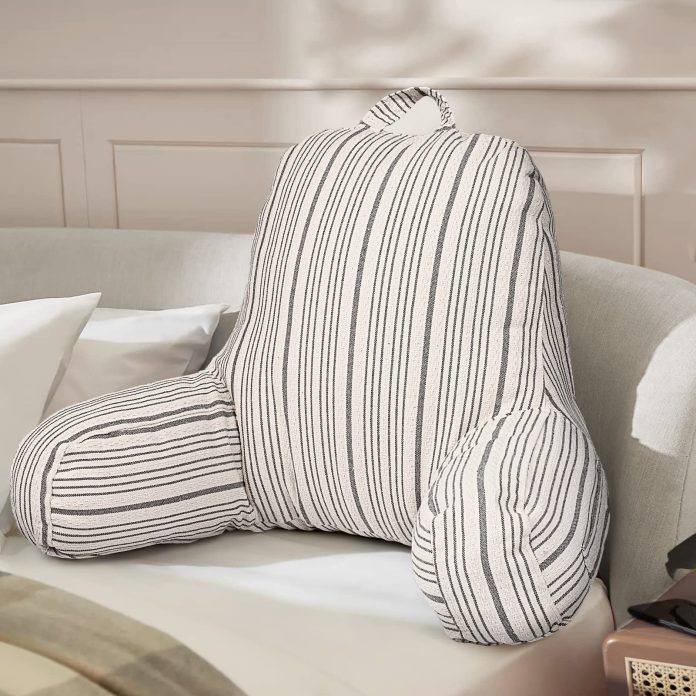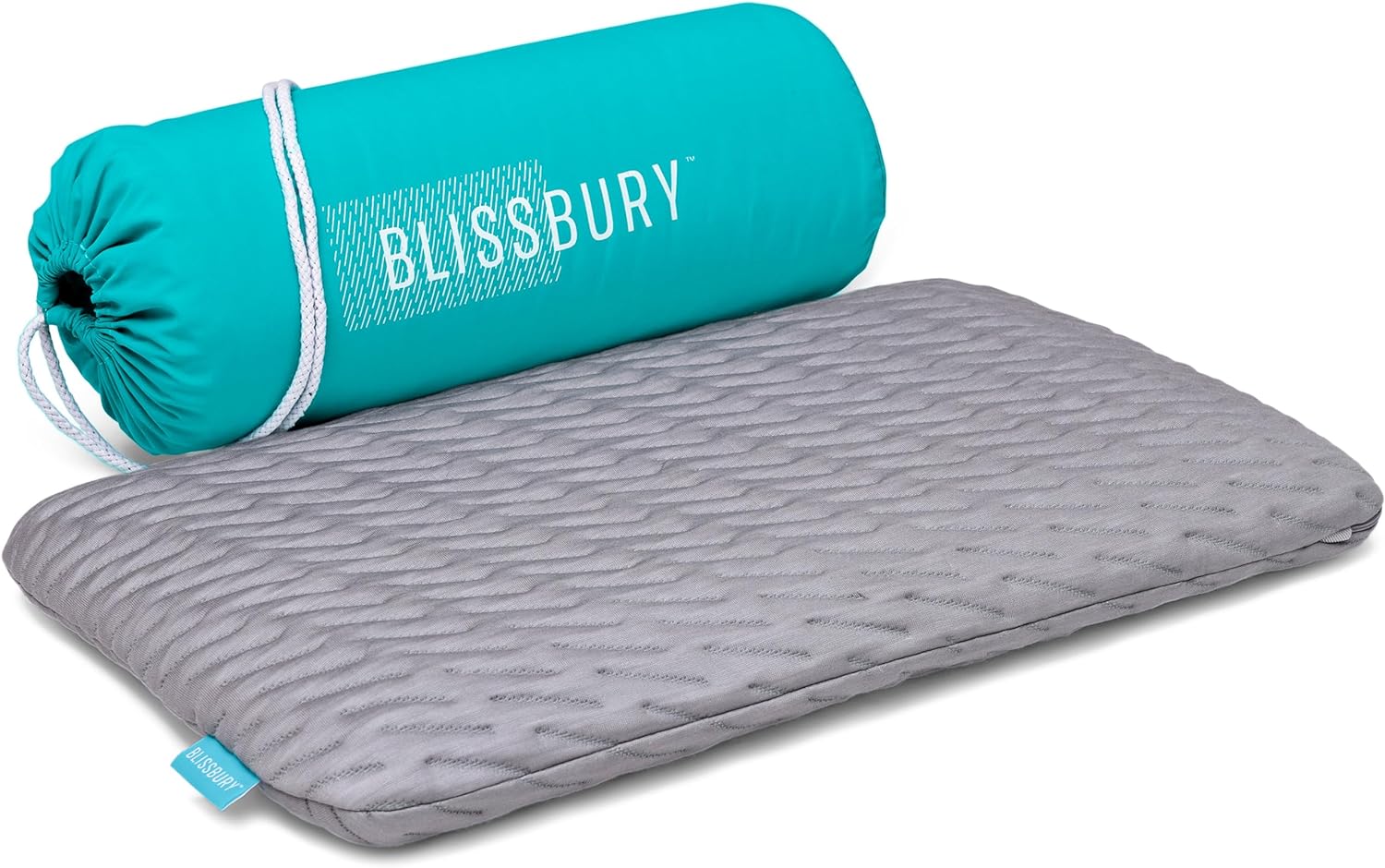Are you struggling to get a good night’s sleep? It may be time to consider replacing your old pillows. Your pillows play an integral role in supporting your neck and spine while you sleep, and over time, they can lose their shape and effectiveness. In this article, we will explore the signs that indicate when it is time to invest in new pillows for improved sleep quality. By recognizing the signals and making the necessary changes, you can wake up feeling refreshed and revitalized each morning. Say goodbye to restless nights and embrace the joy of a comfortable and rejuvenating sleep experience.
Review contents
Signs that it is time to replace your pillow
Lack of support
One of the clear signs that it is time to replace your pillow is when it no longer provides the necessary support for your head and neck. Over time, the filling in the pillow can become compressed and lose its resilience, resulting in a flat and unsupportive surface. If you find yourself constantly tossing and turning or waking up with neck or shoulder pain, it may be a good indication that your pillow is no longer giving you the support you need for a restful sleep.
Visible wear and tear
Another obvious sign that your pillow needs to be replaced is visible wear and tear. If your pillow has noticeable holes, tears, or has become lumpy and misshapen, it is time to bid farewell. Not only does a worn-out pillow look unappealing, but it also fails to provide the comfort and support your head and neck require during sleep.
Allergies or sensitivities
If you find yourself frequently waking up with allergies or respiratory issues, it may be worth considering whether your pillow is to blame. Pillows can accumulate dust mites, allergens, and other irritants over time, especially if they are not properly cleaned. If you suffer from allergies or sensitivities, replacing your pillow with a hypoallergenic or anti-allergen option may help alleviate your symptoms and bring you better sleep quality.
Persistent neck or shoulder pain
Persistent neck or shoulder pain can be a clear sign that your pillow is no longer suitable for you. When a pillow loses its shape and support, it can cause your neck and shoulders to be misaligned during sleep, leading to discomfort and pain. If you are experiencing this, it may be time to invest in a new pillow that provides the necessary support to keep your head, neck, and spine properly aligned.
Flat or lumpy pillow
A flat pillow that offers no loft or support can negatively impact your sleep quality. Similarly, a lumpy pillow can create uneven pressure points and lead to discomfort. If your pillow has lost its fluffiness and has become flat or lumpy, it is a sign that it has reached the end of its lifespan. You deserve a pillow that cradles your head and allows for a peaceful night’s sleep, so it’s best to replace it with a new one.
Change in sleep patterns
If you have noticed a significant change in your sleep patterns, it could be a result of an uncomfortable or worn-out pillow. Poor sleep quality can have a negative impact on your overall well-being and daily functioning. If you find yourself frequently waking up during the night, struggling to fall asleep, or experiencing restless sleep, your pillow may be playing a role in disrupting your sleep patterns. Investing in a new pillow that suits your needs and preferences can help restore a more restful and rejuvenating sleep.
Odor
An unpleasant odor coming from your pillow can be a clear sign that it’s time for a replacement. Over time, pillows can absorb sweat, body oils, and other bodily fluids, resulting in an unpleasant smell. Additionally, if your pillow has been exposed to mildew or mold, it can also produce a musty odor. Not only can the smell be off-putting, but it also indicates a potential hygiene issue. To ensure a fresh and comfortable sleep environment, it’s crucial to replace a pillow that emits unpleasant odors.
Increased frequency of washing
If you find yourself washing your pillow more frequently than before, it’s a sign that it may need to be replaced. While regular washing is essential to maintain a clean sleep surface, excessively washing a pillow can lead to accelerated deterioration. If your pillow has lost its shape or becomes lumpy after multiple washes, it’s an indication that it has reached its lifespan and should be replaced with a new one.
Unusual noises
Pillows should be silent partners during your sleep, providing comfort without any unwelcome noises. If your pillow starts making unusual crunching, squeaking, or rustling sounds while you move around, it’s a sign that the filling has deteriorated or shifted inside. These noises can be disruptive to your sleep and indicate that your pillow is no longer able to fulfill its primary function of providing a peaceful and quiet rest. It might be the perfect time to say goodbye to your noisy pillow and welcome a new one for a quieter night’s sleep.
Age of the pillow
The age of your pillow can also be a determining factor in its overall effectiveness and lifespan. While there is no set timeframe for when a pillow should be replaced, most pillows tend to last between 1 to 2 years, depending on various factors such as the quality of the pillow and frequency of use. If your pillow is older than that and shows signs of wear and tear, it is likely time to invest in a new one for optimal sleep quality.
Importance of replacing old pillows
Maintaining proper alignment
Replacing old pillows is crucial for maintaining proper alignment of your head, neck, and spine during sleep. When a pillow loses its shape and support, it can cause misalignment, leading to discomfort and pain. By replacing your pillow with a new one that provides the necessary support and loft, you can help ensure that your body maintains its natural alignment, promoting overall spinal health and reducing the risk of long-term postural issues.
Preventing allergies and respiratory issues
Old pillows can accumulate dust mites, allergens, and other irritants over time, which can trigger allergies and respiratory issues. These microscopic creatures thrive in the warm and humid environment created by the human body during sleep. By replacing old pillows with hypoallergenic or anti-allergen options, you can create a healthier sleep environment and reduce the risk of allergy flare-ups and respiratory problems, resulting in better sleep quality.
Enhancing sleep quality
Sleep quality has a significant impact on our overall well-being and daily performance. Old pillows that no longer provide adequate support or comfort can disrupt our sleep, causing us to toss and turn or wake up frequently during the night. By investing in a new pillow that suits our specific needs and preferences, we can enhance our sleep quality, allowing for more restful and rejuvenating sleep, and waking up feeling refreshed and energized.
Reducing neck and shoulder pain
Proper support for the neck and shoulders during sleep is essential for reducing pain and discomfort. If your old pillow has lost its shape or support, it can cause misalignment and put undue stress on these areas. By replacing your pillow with a new one that offers appropriate support and loft, you can help alleviate neck and shoulder pain, enabling you to enjoy a more comfortable and pain-free sleep experience.
Preventing acne and skin irritations
Old pillows can harbor dirt, sweat, and oils, which can clog pores and contribute to acne breakouts and skin irritations. The accumulation of these substances can also lead to bacterial growth and unpleasant odors. By replacing your pillow regularly and keeping it clean, you can promote clearer and healthier skin, reducing the chances of developing acne and minimizing skin irritations caused by your pillow.
Maintaining cleanliness and hygiene
Replacing old pillows is essential for maintaining cleanliness and hygiene in your sleep environment. Pillows can accumulate dust, dead skin cells, and other debris over time, resulting in a less hygienic sleeping surface. By investing in new pillows and following proper cleaning and maintenance practices, you can ensure a cleaner and more hygienic sleep environment, reducing the risk of potential allergies, skin issues, and odors.
Improving overall comfort
Sleep comfort is a key aspect of a good night’s sleep. Old pillows that have lost their shape, support, or materials’ quality can become uncomfortable to sleep on. By selecting and replacing your pillow with one that caters to your personal preferences and sleeping style, you can improve your overall sleep comfort, allowing you to relax and enjoy a peaceful night’s sleep.
Factors to consider when replacing old pillows
Sleeping position
Your sleeping position plays a significant role in determining the type of pillow that will best support your head and neck. Side sleepers generally require a higher loft pillow to fill the gap between the head and shoulder, while back sleepers may prefer a medium-loft pillow that maintains the natural alignment of the spine. Stomach sleepers, on the other hand, usually benefit from a low-loft pillow to prevent excessive neck strain. Considering your sleeping position is important when selecting a new pillow that provides the optimal support and alignment for a comfortable sleep.
Personal preferences
Everyone has unique preferences when it comes to pillow firmness, loft, and materials. Some individuals prefer a soft and plush pillow, while others enjoy a firmer, more supportive feel. Additionally, some people may have material preferences due to allergies or sensitivities. Taking your personal preferences into account is important when choosing a new pillow that caters to your individual needs and ensures a comfortable sleep experience.
Pillow material and fill
Pillows come in a variety of materials and fills, each offering different benefits and qualities. Memory foam pillows conform to the shape of your head and neck, providing excellent support and pressure relief. Latex pillows are known for their durability, breathability, and hypoallergenic properties. Down and feather pillows offer a luxurious and plush feel, while microbead and buckwheat pillows provide unique firmness and support. Polyester and cotton pillows are more affordable options that still offer comfort and support. Considering the material and fill of a pillow is crucial to find the right combination of comfort, support, and durability.
Budget
Budget is an important factor to consider when replacing old pillows. Pillows come in a wide price range, depending on the materials, brand, and features. While it can be tempting to opt for a cheaper option, investing in a higher-quality pillow can often provide better comfort, support, and durability, resulting in improved sleep quality in the long run. However, it’s essential to find a balance between your budget and the qualities you desire in a new pillow.
Durability
The durability of a pillow is another important consideration. Some pillows, such as memory foam and latex, tend to have a longer lifespan compared to others. Investing in a more durable pillow can save you money in the long term by reducing the frequency of replacements. However, it’s essential to also consider factors such as warranty and manufacturer reputation when assessing a pillow’s durability.
Ease of maintenance
The ease of maintenance is an important factor to consider, especially if you prefer pillows that are easy to clean. Some pillows, such as those with removable and machine-washable covers, can be more convenient to maintain. Additionally, hypoallergenic pillows or options with antimicrobial properties can help prevent the buildup of allergens and contribute to easier maintenance and a healthier sleep environment.
Availability of different sizes
Different individuals have different sleep preferences and body sizes. Some may prefer larger pillows for extra support or to accommodate their body structure, while others may opt for smaller options for easier maneuverability. Considering the availability of different sizes is important to find a pillow that fits your specific needs and sleep preferences.
Frequency of replacing pillows
General guideline
While there isn’t a specific timeframe for replacing pillows, a general guideline is to replace them every 1 to 2 years. This timeframe takes into account factors such as wear and tear, loss of support, and hygiene concerns. However, it’s important to note that this guideline may vary depending on individual factors, including pillow quality, usage frequency, and personal preferences.
Specific situations
Certain situations may warrant more frequent pillow replacements. For example, if you have allergies or sensitivities, replacing your pillow more frequently can help reduce allergen exposure and alleviate symptoms. Additionally, if you have recently gone through an illness or sustained an injury, a new pillow can provide better support and comfort during the recovery process. Personal circumstances and specific needs should be considered when evaluating whether it’s time to replace your pillow.
Pillow type considerations
Different types of pillows have varying lifespans. Memory foam and latex pillows are known for their durability and can often last longer than down or polyester options. Understanding the expected lifespan of the specific pillow type you are using can help inform when it is time to replace it.
Personal factors
Individual factors, such as personal comfort preferences and usage habits, can also influence the frequency of pillow replacements. If you find that your current pillow no longer provides the comfort, support, or sleep quality you desire, it may be time to consider a replacement. Paying attention to your body’s needs and listening to any discomfort or pain can help guide you in determining when to replace your pillow.
Observing signs of deterioration
It’s important to regularly assess your pillow for signs of deterioration. If you notice any of the signs mentioned earlier, such as lack of support, visible wear and tear, or changes in sleep patterns, these may indicate that your pillow needs to be replaced. Being proactive in monitoring the condition of your pillow can help ensure that you maintain a quality sleep surface and enjoy the benefits of a comfortable and supportive sleep environment.
Different types of pillows
Memory foam pillows
Memory foam pillows are popular for their ability to conform to the shape of your head and neck, providing personalized support and pressure relief. The viscoelastic material responds to body heat, creating a customized and comfortable sleeping surface. Memory foam pillows are known for their durability and ability to maintain their shape over time.
Latex pillows
Latex pillows are made from natural or synthetic latex, providing a resilient and breathable sleeping surface. They offer excellent support and can help maintain proper spinal alignment. Latex pillows are hypoallergenic, resistant to dust mites and mold, and have a longer lifespan compared to other types of pillows.
Down pillows
Down pillows are known for their luxurious and fluffy feel. They are filled with the soft undercoating of bird feathers, providing a lightweight and moldable sleep surface. Down pillows offer excellent insulation and breathability, making them suitable for all seasons. They are highly customizable and can be fluffed to your desired loft.
Feather pillows
Feather pillows are similar to down pillows but contain a higher percentage of feathers, providing firmer support. While they may not have the same level of luxurious softness as down pillows, feather pillows still offer good contouring and comfort. They are an affordable option for those seeking a natural fill pillow.
Microbead pillows
Microbead pillows are filled with tiny beads usually made of polystyrene. They offer a unique feel that can provide firm, contouring support. Microbead pillows are known for their ability to adjust to your specific shape and are often favored for their firmness, especially by individuals who require maximum support.
Buckwheat pillows
Buckwheat pillows are filled with the hulls of buckwheat seeds. They offer excellent breathability and can help keep your head cool during sleep. Buckwheat pillows are known for their ability to conform to the shape of your head and offer firm, consistent support. They can be adjusted by adding or removing hulls to achieve your desired loft.
Polyester pillows
Polyester pillows are affordable and widely available. They can offer a good balance of support and comfort for the price. Polyester fill pillows are hypoallergenic and can be machine-washed for easy maintenance. They may not provide the same level of contouring or breathability as other types of pillows but still offer a decent sleep surface.
Cotton pillows
Cotton pillows are made from natural cotton fibers and are known for their softness and breathability. They offer a cooler sleep surface and can be a good option for individuals who prefer a more traditional and less synthetic feel. Cotton pillows may require fluffing to maintain their loft and support.
Tips for selecting and maintaining new pillows
Consider your sleeping position
Take into account your preferred sleeping position when selecting a new pillow. Side sleepers may benefit from a pillow with a higher loft to fill the gap between the head and shoulder. Back sleepers may prefer a medium-loft pillow that supports the natural curvature of the spine. Stomach sleepers may opt for a low-loft pillow to prevent excessive neck strain. Choosing the right pillow for your preferred sleeping position can contribute to better sleep quality and spinal alignment.
Choose the right pillow fill
Consider your preferences and desired qualities when choosing the fill material for your pillow. Memory foam provides personalized support and pressure relief, while latex offers resilience and hypoallergenic properties. Down and feather provides a luxurious and fluffy feel, while microbead and buckwheat offer unique firmness and support. Polyester and cotton provide more affordable options with decent comfort and support. Understanding the characteristics of each fill material can help you select the right pillow for your needs.
Test the pillow before purchasing
If possible, test the pillow before making a purchase. Many stores have displays or allow you to feel the pillows to assess their loft, firmness, and overall comfort. It’s important to evaluate how the pillow feels when you lie down and determine whether it provides the support and comfort you are seeking. Testing the pillow can help you make an informed decision and select a pillow that suits your preferences.
Opt for hypoallergenic options
If you suffer from allergies or sensitivities, consider choosing a hypoallergenic pillow to reduce potential triggers. Hypoallergenic pillows are specially designed to resist dust mites, mold, and other common allergens, making them suitable for individuals prone to allergies. Opting for hypoallergenic options can help create a healthier sleep environment and alleviate allergy symptoms.
Use pillow protectors and cases
Using pillow protectors and cases is an effective way to prolong the lifespan and cleanliness of your pillow. Pillow protectors act as a barrier against sweat, stains, and allergens, preventing them from reaching the pillow itself. Pillowcases can be easily removed and washed, helping to maintain a clean and fresh sleep surface. Investing in high-quality pillow protectors and cases can contribute to the longevity and hygiene of your new pillow.
Follow manufacturer’s care instructions
Proper care and maintenance can significantly impact the lifespan and performance of your pillow. Always follow the manufacturer’s care instructions to ensure you are properly cleaning and maintaining your pillow. Different types of pillows may require different care methods, such as spot cleaning, hand washing, or machine washing. Following the recommended care instructions can help preserve the integrity and comfort of your pillow for longer.
Fluff and rotate pillows regularly
Regularly fluffing and rotating your pillow can help maintain its shape and support. Fluffing the pillow helps redistribute the filling and prevent uneven wear. Rotating the pillow can also help distribute the pressure and maintain a consistent loft. Making it a habit to fluff and rotate your pillow every few weeks can contribute to its longevity and ensure optimal comfort and support.
Replace pillows with age and signs of wear
As mentioned earlier, pillows should generally be replaced every 1 to 2 years. However, it’s important to also pay attention to signs of wear and tear and replace your pillow if it shows significant deterioration or no longer provides the necessary support and comfort. Don’t hesitate to invest in a new pillow if you notice a decline in sleep quality or experience discomfort or pain during sleep. Prioritizing your sleep health and replacing pillows at the appropriate time can lead to better sleep quality and overall well-being.
Conclusion
Replacing old pillows is an essential step in maintaining a comfortable and supportive sleep environment. Signs such as lack of support, visible wear and tear, allergies or sensitivities, persistent neck or shoulder pain, flat or lumpy pillow, change in sleep patterns, odor, increased frequency of washing, unusual noises, and age of the pillow indicate that it is time to replace your pillow for better sleep quality.
Replacing old pillows is important for maintaining proper alignment, preventing allergies and respiratory issues, enhancing sleep quality, reducing neck and shoulder pain, preventing acne and skin irritations, maintaining cleanliness and hygiene, and improving overall comfort. Considering factors such as sleeping position, personal preferences, pillow material and fill, budget, durability, ease of maintenance, and availability of different sizes can help you select the right pillow for your needs.
The frequency of replacing pillows depends on factors such as general guidelines, specific situations, pillow type considerations, personal factors, and observing signs of deterioration. Different types of pillows, including memory foam, latex, down, feather, microbead, buckwheat, polyester, and cotton, offer various qualities and benefits to cater to individual preferences and needs.
To select and maintain new pillows effectively, consider your sleeping position, choose the right pillow fill, test the pillow before purchasing, opt for hypoallergenic options, use pillow protectors and cases, follow manufacturer’s care instructions, fluff and rotate pillows regularly, and replace pillows with age and signs of wear. By taking these steps, you can ensure a comfortable and rewarding sleep experience. So, take the important step of replacing your old pillows and embark on a journey to better sleep and improved well-being.



























